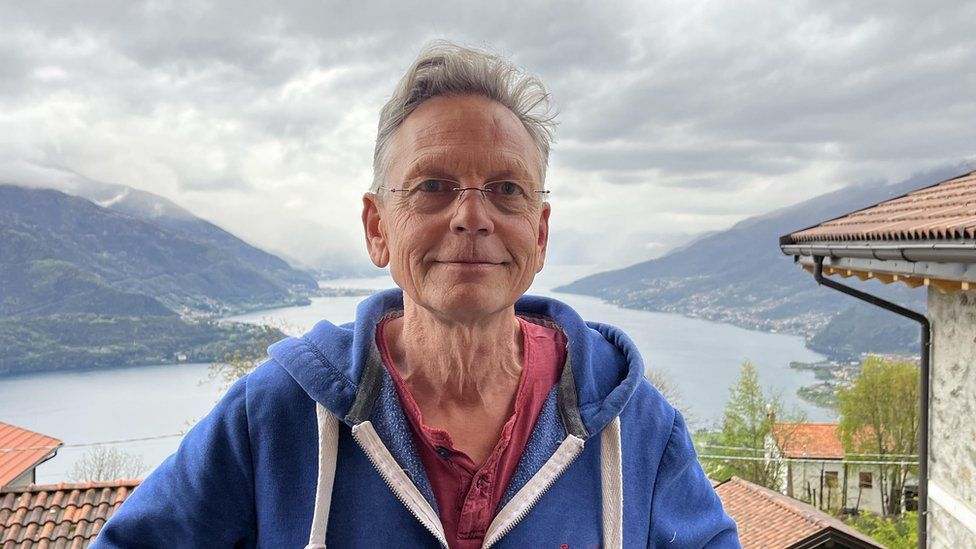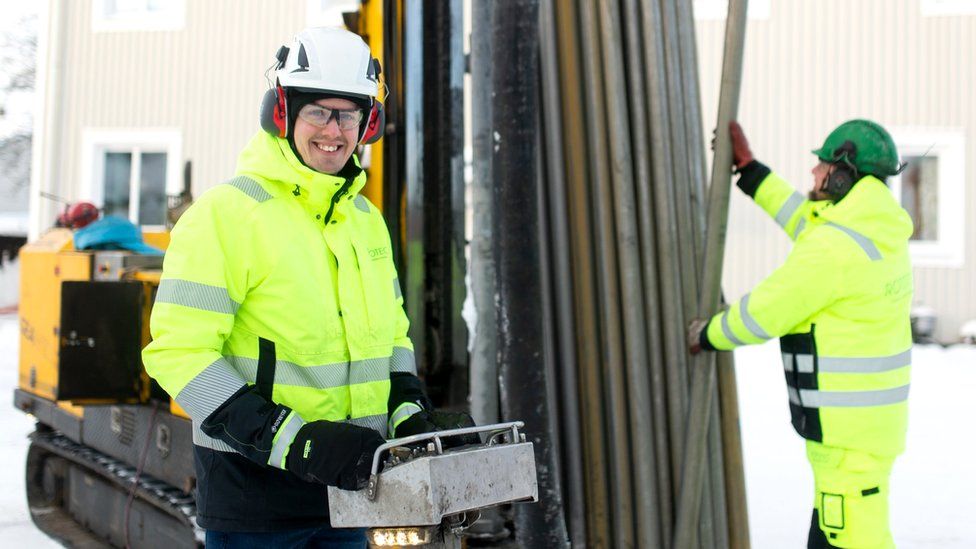Which European nations are winning the heat pump race?

When Andreas Rosen decided to future-proof his home in Germany’s Mosel wine region, he knew he wanted to upgrade his heating system to a low-carbon heat pump.
“I didn’t want to deliver it to the next generation with an oil system,” says Mr Rosen. “We were wondering what we should do for the longer run and now [a heat pump] was doable with government help.”
About half of Germany’s 41 million homes currently rely on gas heating, with another quarter running on oil. In a bid to encourage homeowners to decarbonise their heating, Germany introduced a rebate scheme in January 2023 that offers up to 40% back on the cost of buying and installing a heat pump.
Heat pumps use energy taken from the air, water or ground to provide both heating and cooling. They have been proven to work even in extreme temperatures and can drastically reduce energy bills once installed.
The scheme is just one of a host of heat pump subsidies in place across Europe and part of a broader push to reduce carbon emissions. From 2024, every new heating system installed in Germany must run on 65% renewable energy.
Bastian Distler, a product manager in Ketsch in south-west Germany, was considering upgrading to a heat pump anyway for environmental reasons, but admits that he wouldn’t have been able to without the subsidy. Purchase and installation can cost anywhere from €10,000 to €30,000 (£8,700 to £26,000; $11,000 to $33,000) compared to around €7,000 for a new gas boiler.
“I have two little children which makes you question some behaviours and you feel better if you do something good for the environment. But to be very honest, if it had been very, very expensive and it didn’t pay off, I probably would not have done it,” says Mr Distler.
While the scheme is certainly making it easier for Germans to invest in heating system upgrades, heat pump sales were already on the increase.
“We had a market growth of 53% last year,” says Martin Sabel, managing director of the German Heat Pump Association. “The year before it was around 30% and the year before that around 40%. So we’ve had a good growth rate for several years now.”
The dramatic uptick in demand caught many manufacturers off guard, leaving some homeowners waiting up to 10 months before their new heat pumps could be supplied and installed by trained technicians, who are also in short supply.

Manufacturers like Viessmann are scaling up production to solve the shortfall, as well as pouring huge investment into training installers, providing educational materials for would-be buyers, and helping customers navigate often complex subsidy applications.
Günther Schlachter, vice president of residential electric solutions at Viessmann, believes that supporting and training installers is key to decarbonising home heating.
“Our installer… can consult with their customers [and advise against] the cheapest gas or oil option to make use of the subsidies that are now in place for a future-proof solution,” says Mr Schlachter.
Jürgen Fischer, president of climate solutions at Danfoss agrees. “Typically, installers focus on gas. For a heat pump, they need to also understand electrics and refrigeration. So educating the end user is important, but it’s more important to educate the person selling the system because 80% of the decision-making process happens with the installer.”
Most European countries currently face the same issues with supply, installer training and cost, but geography and culture also heavily influence what we expect and demand from our heating systems.


So perhaps it is not surprising that Europe’s coldest countries, with the best insulation, have the highest heat pump penetration. According to the International Energy Agency, 60% of Norway’s buildings are fitted with a heat pump, followed closely by Sweden at 43% and Finland at 41%.
In Germany the figure is a little over 4% and in the UK just 1%.
“Scandinavia is much more advanced because they have higher insulation standards and moved from direct electric heating to heat pumps early because it’s saved them from day one,” says Thomas Nowak, secretary general of the European Heat Pump Association.
Central Europeans also tend to have high expectations of heating and insulation whereas people in the UK have long accepted the need for draught excluders and chunky indoor jumpers.
Southern countries tend to eschew heating in favour of cooling and use instantaneous gas boilers to heat water, whereas Eastern Europeans often rely on solid fuel stoves.

Regardless of where you live or how old your building is, there’s an easy way to find out if your home is suitable for a heat pump.
If you can feel comfortable at home when the flow temperature on your boiler is reduced to 55C, then you can install a heat pump straight away without retrofits or insulation upgrades.
Of course, not everyone can choose how their home is heated. Germany has one of the lowest home ownership rates in Europe, which means the onus is on landlords and housing management companies to upgrade heating to serve the country’s approximately 40 million tenants.
The German Heat Pump Association has seen housing providers begin to understand that decarbonisation will soon begin to affect their bottom line.
“They have the goal of decarbonising their building stock because they realise that if they don’t, in 10 or 20 years, they won’t be able to rent these flats anymore,” says Martin Sabel.
Tenants who would prefer to take matters into their own hands may soon be able to access smaller-scale heat pump solutions for heating and cooling individual rooms.
US start-up Gradient hopes to enter the European market in 2023 and is working on producing small, affordable, self-install heat pumps that fit over window sills and can replace existing air conditioning units.
For Viessmann, the long-term vision is to build a holistic low-carbon, low-cost energy system where heat pumps, high-quality insulation, solar energy, rerouted waste heat, other renewables, and smart technology work in tandem to provide a circular system of heating and cooling, charging cars, and meeting other energy needs for homeowners and their wider community.
Germany may still be a long way from that, but heat pumps are a good step on that road. When asked what message homeowners should take home about heat pumps, Thomas Nowak has a simple answer.
“They work. That’s all. Don’t trust anybody who tells you they don’t.”
